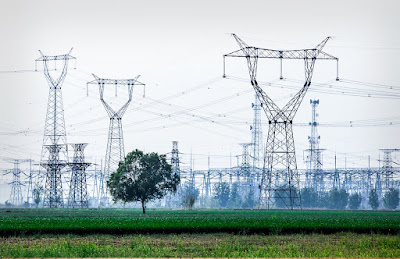Answer the following in brief:
Short notes on Skin Effect
Skin effect is a phenomenon in electromagnetism that occurs when alternating current (AC) flows through a conductor. It causes the current density to be higher near the surface of the conductor than in the interior. This is because the changing magnetic field produced by the AC current induces eddy currents in the interior of the conductor, which oppose the flow of current. As a result, the current is concentrated in a thin layer near the surface of the conductor, which is known as the skin depth.
The skin effect is more pronounced at higher frequencies, and it can cause a significant increase in the resistance of a conductor.
Discuss the Proximity Effect
Proximity effect, also known as the crowding effect, is an electromagnetic phenomenon that occurs when two or more parallel conductors carrying alternating current (AC) are close together. It causes the current to redistribute in the conductors, with more current flowing on the side of the conductor facing away from the other conductor. This redistribution of current can lead to an increase in the apparent resistance of the conductors, which can affect the performance of electrical devices.
Briefly discuss electromagnetic and electrostatic interference with communication lines
EMI is caused by the presence of electromagnetic fields, while ESI is caused by the presence of electrostatic fields.
- EMI is a disturbance that affects an electrical circuit by electromagnetic induction, electrostatic coupling, or conduction. It can be caused by a variety of sources, including power lines, motors, and electronic devices.
- ESI is a disturbance that affects an electrical circuit by electrostatic coupling. It is caused by the presence of electric charges. ESI can be caused by a variety of sources, including static electricity, lightning, and power surges.
Need of DC power supply in a power plant
- Excitation of Alternators
- Control and Automation Systems
- Battery Backup
- HVDC Transmission
- More efficient than A.C
- Gives regulated voltage
- gives better isolation
Advantages of Bundled conductor in transmission lines
- Increased Current-carrying Capacity
- Reduced Corona Effect
- Enhanced Voltage Regulation
- Reduced Inductance
- Improved Wind Resistance
- Reduced Right-of-Way Requirements
- Simplified Maintenance
- Improved Aesthetics
Different types of cables
- Underground Cables: PVC Insulated Cables, XLPE Insulated Cables and Oil-Filled and Gas-Pressure Cables
- Overhead Cables: Bare Conductors and XLPE Insulated Cables.
- Submarine Cables: Oil-Filled and Gas-Pressure Cables and Lead-Sheathed Cables.
- Special Purpose Cables: Flexible Cables, Coaxial Cables and Fiber Optic Cables
Significance of Power Angle
Power angle (δ), also known as the load angle or torque angle, plays a crucial role in the operation of synchronous machines, particularly in power systems. It represents the angular displacement between the rotor's rotating magnetic field and the stator's induced voltage phasor.
Significance of Power Angle in Generators:
- Power Transfer
- Stability
- Governor Control
Significance of Power Angle in Motors
- Speed Control
- Power Factor Correction
- Stability
What is transfer reactance?
Transfer reactance, also known as mutual reactance, is a measure of the opposition to alternating current (AC) power flow between two coupled circuits. It is defined as the ratio of the voltage drop across one circuit to the current flowing in the other circuit, both at a specified frequency.
What is sag template?
A sag template is a tool used in the design of electrical transmission lines to determine the appropriate placement of towers or poles. It is a transparent sheet with curves drawn on it, representing the sag of the conductors under various conditions.
The sag of a conductor is the vertical deflection of the conductor due to its own weight and the tension in the conductor.
Write down empirical formula of calculating Corona Loss.
where Vp is the phase-to-neutral operating voltage in kV and f is the supply frequency in Hz.f is the frequency in Hzd is the conductor diameter in cm
r is the conductor spacing in cm


Comments